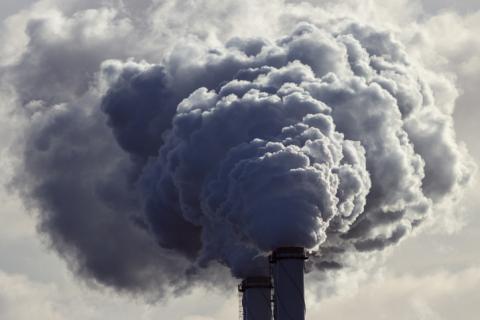The economic costs of adapting to climate change are already known to be substantial; new research shows the countries most at risk are also paying a penalty in the bond markets
It is no secret that man-made climate change saddles countries with additional economic and social costs. Floods, droughts and storms will increase in both frequency and severity in the coming years, affecting many people across the globe. For those at the forefront of climate change, developing relief and mitigation efforts is an urgent priority.
Our recent research uncovers a previously hidden cost of dealing with climate change: as these risks increase, the cost of capital in the worst effected countries has become more expensive. In our recently published research commissioned by UN Environment, we found that, for every $10 these countries spend on interest payments, an additional dollar of interest is added due to climate vulnerability.
Our research, which we co-authored with SOAS University of London and was supported by the MAVA Foundation, examines the sovereign borrowing rates of the “Vulnerable 20” countries. As weather shocks like storms become more frequent and long-term trends like sea level rises begin to manifest, the credit ratings of these countries are likely to deteriorate due to the increased risks of climate events occurring. Rating reductions cause an increase in the cost of international and domestic capital in these countries, resulting in higher interest payments.
With 15 per cent of Vietnam’s landmass below five meters above sea level, the country faces serious threats from flooding and sea level rises
This is already having a real financial impact. We have found that, over the past 10 years, these countries have paid an additional $40 billion in interest payments they would not have paid otherwise. Looking forward, we expect that between $146 billion and $168 billion in additional interest will be paid by these countries over the next decade.
The price of rice
The specific impacts of climate change vary due to geography, population, wealth and infrastructure. Generally, a country’s agricultural industry plays a significant part. If a nation is an exporter of food and the effects of climate change prompt a fall in crop production, the country’s current account deficit would rise, and the rating could be affected. If it is an importer, higher prices elsewhere inflate the price of food.
One country among those we looked at is Vietnam. It plays a significant role in the world’s rice production, with the industry contributing to the country’s ongoing trade surpluses. Many of Vietnam’s rice farms are small operations owned by individual farmers, with only two per cent of rice farms in the country being greater than two hectares in size.
For every $10 these countries spend on interest payments, an additional dollar of interest is added due to climate vulnerability
With 15 per cent of Vietnam’s landmass below five meters above sea level, the country faces serious threats from flooding and sea level rises. Flooding causes the salination of rivers, disrupting the fresh water supply needed for the production of rice. The International Food Policy Research Institute report “Climate Change: Impact on Agriculture and Costs of Adaptation” has forecast that, by 2050, yield losses in rice could be between 10 and 15 per cent. A fall in rice production and exports has the potential to drive up food prices and eat away at Vietnam’s trade surplus, damaging the country’s credit profile and increasing the cost of borrowing. These future threats could be enough to make Vietnam a riskier investment opportunity.
Answers at a cost
There are ways for countries to reduce their economic exposure to the risks of climate change and alleviate the financial penalty that accompanies it. Investment in adaption programmes and climate resistant infrastructure is one, reducing the immediate impact of a sudden event like a flood. There are also measures to speed up the economic recovery after such events, like insurance schemes and risk pools. Programmes that address shortfalls in ICT infrastructure, education, innovation, and social inequality are also crucial to strengthening a nation’s capacity to adapt to climate change more generally.
The major barrier to implementing these initiatives is often the cost. With countries already penalised due to their exposure to climate change threats, adapting is made all the more expensive by higher borrowing costs. While investments in building resilience to climate change are thereby made doubly valuable, the question remains who will fund it. Governments cannot do it alone and so adaptation financing from the private sector is bound to be an important challenge (and opportunity) for banks and other financial intermediaries in the years ahead.
This article is based on findings from the paper “Climate Change and the Cost of Capital in Developing Countries: Assessing the Impact of Climate Risks on Sovereign Borrowing Costs”, co-authored by Bob Buhr, Charles Donovan and Natalie Pullin (Imperial Business School), and Gerhard King, Yuen Lo, Victor Murinde and Ulrich Volz (SOAS University of London).


